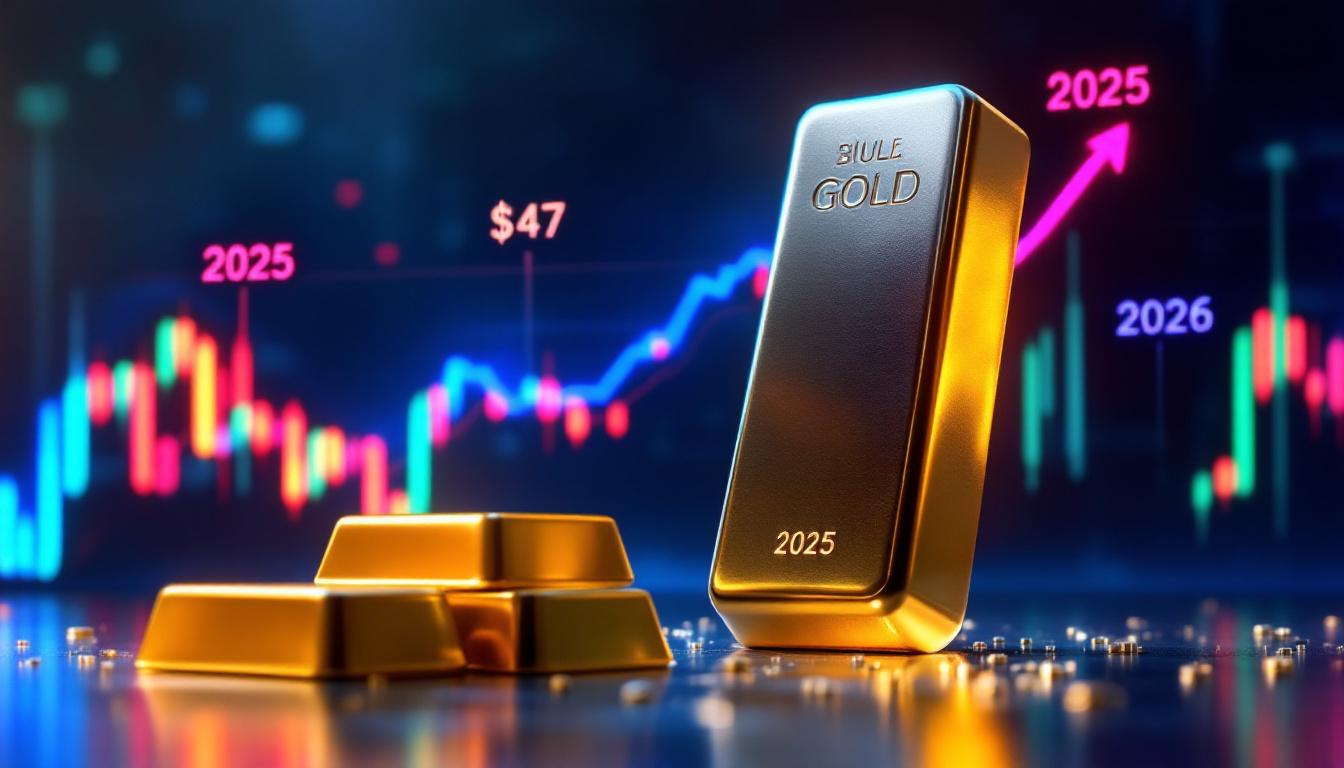What Makes Gold a Unique Investment Asset?
Gold stands apart from other investment vehicles due to its historical significance and consistent performance during economic uncertainty. Unlike paper assets, gold maintains intrinsic value regardless of market conditions, making it a reliable store of wealth during inflationary periods.
The precious metal has demonstrated remarkable resilience throughout human history, serving as a universal store of value across civilizations and economic systems. This enduring quality continues to attract investors seeking stability in volatile markets.
The Historical Performance of Gold as an Investment
Since 2000, gold has demonstrated extraordinary growth, rising from approximately $250 per ounce to around $2,400 per ounce in May 2025. This steady appreciation illustrates gold's resilience as a long-term investment vehicle.
While many assets fluctuate dramatically during economic downturns, gold has maintained a generally upward trajectory over decades. According to data from JP Morgan Chase cited by industry expert Rick Rule, the average gold allocation in U.S. investment portfolios currently stands at just 0.5%, significantly below the historical mean of 2%.
"Gold bull markets are always led by gold. Leadership shifts to equities only after bullion establishes upward momentum." — Rick Rule
This historical underallocation suggests significant potential for increased investment flows into the gold and gold investing sector as more investors recognize its value as a portfolio stabilizer.
Gold's Role in Portfolio Diversification
Gold serves as an effective hedge against:
- Currency devaluation
- Stock market volatility
- Geopolitical instability
- Inflation and purchasing power erosion
A strategic allocation to gold can significantly reduce overall portfolio volatility while potentially enhancing long-term returns. The World Gold Council's research indicates that portfolios with a 5-10% allocation to gold typically experience lower drawdowns during market corrections while maintaining competitive returns over complete market cycles.
During the stagflationary environment of the 1970s, when the U.S. dollar lost approximately 75% of its purchasing power, gold provided exceptional protection by rising nearly 30-fold. This historical precedent is particularly relevant given today's macroeconomic conditions.
How Do Gold Bull Markets Develop?
Gold bull markets follow a predictable sequence that investors can leverage for strategic positioning. Understanding these phases allows investors to optimize entry points and adjust allocations throughout the cycle.
The Three Phases of a Gold Bull Market
-
Physical Gold Appreciation Phase
- Gold bullion leads the market higher
- Minimal movement in mining equities
- Establishes market leadership and investor confidence
-
Senior Producers Expansion Phase
- Major mining companies begin outperforming
- Occurs when gold prices rise faster than production costs
- Characterized by strong quarterly earnings from producers
- Recent evidence: increased fund flows into gold equity ETFs exceeding $2 billion in Q1 2025
-
Junior Explorers Explosion Phase
- Smaller companies experience dramatic price appreciation
- Developers and explorers often deliver the highest percentage gains
- Typically occurs in the middle to late stages of the bull market
"Junior explorers often deliver 10-100x returns in late-stage bull markets, but they require specialized knowledge and higher risk tolerance." — Rick Rule
The key driver of mining company profitability is the spread between production costs and gold prices. The industry metric for production costs, All-In Sustaining Costs (AISC), currently averages around $1,300 per ounce across major producers. With gold trading at approximately $2,400, producers are enjoying margins of about $1,100 per ounce—a level that historically triggers significant equity appreciation.
Current Market Indicators (2023-2024)
The gold market has shown clear signs of entering a robust bull phase:
- Gold price has established strong upward momentum with a 30% rise in 2023-2024
- Major producers are reporting exceptional quarterly results in early 2025
- Initial capital flows into gold equity ETFs have accelerated in the last 13 weeks
- Production costs are being outpaced by rising gold prices
- Newmont's strategic acquisition of Pioneer Resources in 2023 signals industry consolidation typical of expanding bull markets
Historical examples provide context for the potential magnitude of returns in this sector. During the 1990s bull market, Pan-American Silver rose from $0.50 to $45 per share, while Silver Standard Resources climbed from $0.72 to $45—returns that far exceeded broad market indices.
Why Are We Seeing Gold's Resurgence Now?
Several macroeconomic factors are converging to create ideal conditions for gold appreciation, with striking parallels to previous bull markets.
Interest Rate Dynamics and Bond Market Signals
A concerning divergence has emerged between short-term and long-term interest rates:
- The Federal Reserve has attempted to lower short-term rates
- Long-dated interest rates continue climbing despite these efforts, with 10-year Treasury yields reaching 4.5% in 2025
- This pattern suggests the Fed may be losing control of interest rate management
- Similar conditions occurred in 1975, preceding a major gold bull market that saw prices surge from $100 to $850 per ounce
As Rick Rule notes, "The Fed is losing control of interest rates, mirroring 1975 precedents." This observation is further validated by former Dallas Federal Reserve researcher Daniela D. Martino Booth, who has highlighted structural weaknesses in modern monetary policy.
Economic Slowdown Indicators
Multiple signals point to a slowing global economy:
- Oil price declines reflect reduced demand, not increased production, with Brent crude falling 20% in 2024
- Trade uncertainty and economic nationalism are creating headwinds
- Manufacturing and industrial metrics show contraction
- Resource nationalism in countries like Peru has delayed critical mining projects like Cerro de Pasco
The combination of these factors creates a particularly favorable environment for gold, which historically outperforms during periods of economic uncertainty and monetary debasement.
The Stagflation Scenario
Current conditions mirror aspects of the 1970s economic environment:
- High inflation persisting despite economic slowdown (2024 CPI at 4.8%)
- Rising unemployment (5.1% in 2024) alongside price increases
- Weakening purchasing power of major currencies
This combination—termed stagflation—historically creates extremely favorable conditions for gold and gold investing. The International Monetary Fund's April 2025 Global Financial Stability Report has highlighted increasing risks of a prolonged stagflationary environment, further strengthening the case for gold.
How Does U.S. Fiscal Policy Impact Gold Prices?
The relationship between government debt, currency devaluation, and gold prices creates a compelling investment case that transcends short-term market fluctuations.
The U.S. Debt Reality
The United States faces unprecedented fiscal challenges:
- On-balance sheet obligations have reached approximately $35 trillion (2025)
- Off-balance sheet liabilities represent multiples of official debt, exceeding $100 trillion
- Historical precedent from the 1970s: the dollar lost 75% of purchasing power over a decade
- M2 money supply has grown at approximately 6% annually since 2020
These fiscal realities create structural pressure on the U.S. dollar, potentially benefiting gold and other hard assets. Former Goldman Sachs executive Nomi Prins has emphasized that "Wall Street's structural flaws amplify fiscal risks," creating conditions where gold serves as monetary insurance.
Currency Debasement and Gold Performance
When currencies lose purchasing power, gold typically maintains or increases its real value:
- During the 1970s, as the dollar declined 75%, gold appreciated substantially
- Current fiscal conditions suggest a similar pattern may develop between 2025-2035
- Gold serves as insurance against this currency devaluation scenario
The relationship between negative real interest rates (nominal rates minus inflation) and gold price forecast is particularly noteworthy. With real rates currently around -2%, the opportunity cost of holding gold is effectively eliminated, creating strong incentives for increased allocations to the metal.
| Period | Dollar Purchasing Power Decline | Gold Price Performance |
|---|---|---|
| 1971-1980 | -75% | +2,300% ($35 to $850) |
| 2000-2023 | -40% (est.) | +860% ($250 to $2,400) |
| 2025-2035 | -75% (projected) | ? |
"Gold serves as insurance against currency debasement. Portfolio allocation should be viewed as a contingency strategy." — Rick Rule
What Are the Best Ways to Invest in Gold?
Investors can access gold through multiple vehicles, each with distinct risk-reward characteristics and appropriate weightings within a diversified portfolio.
Physical Gold Ownership
Direct ownership of gold bullion offers:
- Maximum security from counterparty risk
- Potential tax advantages in certain jurisdictions
- Protection from financial system disruptions
- Challenges with storage, insurance, and liquidity
Physical gold typically carries annual storage costs of approximately 0.5% for professional vaulting services. Investors should consider the structural differences between various gold investment vehicles, such as SPDR Gold Shares (GLD) versus Sprott Physical Gold Trust (PHYS), particularly regarding redemption rights and physical backing.
Senior Gold Producers
Established mining companies provide:
- Operational leverage to gold prices
- Dividend income potential
- Liquidity and ease of trading
- Management expertise and diversified operations
- Currently showing strong earnings growth as production costs are outpaced by gold prices
Major producers like Newmont (NEM) and Barrick Gold (GOLD) are currently operating with AISC margins of approximately $1,100 per ounce, creating substantial free cash flow. This profitability enables dividend increases, debt reduction, and strategic acquisitions—all factors that typically drive share price appreciation during bull markets.
Junior Gold Explorers and Developers
Smaller gold companies offer:
- Maximum upside potential (historically capable of 10-100x returns in bull markets)
- Exploration upside and discovery potential
- Acquisition targets for major producers
- Higher risk profile requiring specialized knowledge
Mining executive Ross Bey emphasizes the importance of focusing on "tier-one deposits" with exceptional grade, scale, and jurisdictional quality. Recent success stories like Greatland Gold's reported 400-million-ounce discovery in Peru demonstrate the transformative potential of junior mining investments.
How Do Gold Stocks Perform During Different Market Phases?
Gold equities demonstrate distinct performance patterns throughout market cycles, with profitability heavily influenced by the relationship between production costs and prevailing gold prices.
Production Cost vs. Gold Price Dynamics
Gold mining profitability is driven by the spread between:
- All-in sustaining costs (AISC) of production
- The market price of gold
When gold prices rise faster than production costs, mining company profits can increase exponentially, leading to substantial share price appreciation. This operational leverage explains why mining equities often outperform physical gold during mature bull markets.
For example, if a company produces gold at $1,300 per ounce and the gold price rises from $1,600 to $2,400, their profit margin expands from $300 to $1,100 per ounce—a 267% increase in profitability despite only a 50% increase in the gold price.
Historical Performance Patterns
Gold equity performance during previous bull markets shows dramatic potential:
- During the 1970s bull market, quality junior miners delivered returns exceeding 50x
- The 1990s saw companies like Pan-American Silver rise from $0.50 to $45
- Silver Standard Resources appreciated from $0.72 to $45 during the same period
These historical precedents underline the extraordinary wealth creation potential in this sector, particularly for investors who identify quality assets early in the cycle.
Investment Timing Considerations
Strategic entry points in gold equities depend on:
- Current phase of the gold bull market
- Relative valuation metrics compared to gold price
- Management quality and operational efficiency
- Balance sheet strength and development pipeline
Investors should be aware that even in bull markets, mining equities can experience significant volatility. Junior explorers may see 70-80% drawdowns before recovering, requiring strong conviction and risk management discipline.
How Should Investors Approach Silver in a Gold Bull Market?
Silver presents unique characteristics that complement gold investments but follows its own pattern within precious metals cycles.
The Gold-Silver Relationship
While the gold-silver ratio (currently around 100:1) receives significant attention:
- Historical production ratios suggest 16:1 as a "natural" relationship
- Market dynamics are more complex than simple supply ratios
- Price movements are driven primarily by investment demand, not industrial usage
The extreme gold-silver ratio of 100:1 is historically unusual and suggests potential outperformance for silver if the ratio reverts toward historical norms. However, investors should understand that silver typically lags gold in the early stages of bull markets.
Silver's Market Behavior
Silver typically follows a predictable pattern in precious metals bull markets:
- Gold establishes leadership and market direction
- Senior gold producers begin outperforming
- Mid-tier gold companies follow
- Silver experiences dramatic price appreciation when generalist investors enter the market
This sequence has been consistent across multiple bull market cycles, including the 1970s and the 2000-2011 period. Understanding this pattern allows investors to strategically time their entry into silver-focused investments.
Silver Production Realities
Understanding silver supply dynamics is crucial:
- Only about 18% of global silver comes from primary silver mines
- Most production occurs as a byproduct of other metal mining
- This reduces the impact of production costs on price
- Private holdings of silver exceed government reserves, unlike gold
These supply characteristics make silver production less responsive to price increases, potentially amplifying price movements during periods of strong investment demand.
What Are the Key Risks in Gold and Silver Investing?
Precious metals investing carries specific risks that require careful management and appropriate portfolio sizing.
Market Volatility Considerations
Price volatility in precious metals markets can be extreme:
- Gold can experience 20-30% corrections even within bull markets
- Silver price swings can exceed 50% in short timeframes
- Junior mining stocks may see 70-80% drawdowns before recovering
This volatility necessitates disciplined position sizing and psychological preparation. The remarkable upside potential in this sector comes with corresponding risk that must be managed through diversification and appropriate allocation limits.
Geopolitical and Regulatory Risks
Mining operations face jurisdiction-specific challenges:
- Resource nationalism can threaten ownership rights
- Environmental regulations may impact development timelines
- Social license issues can delay or halt projects
- Political instability in mining regions creates operational risks
Recent examples include permitting delays at Cerro de Pasco in Peru and operational challenges at Equinox Gold's Ontario projects. These case studies emphasize the importance of jurisdictional diversification within mining portfolios.
Portfolio Allocation Guidelines
Prudent allocation strategies suggest:
- Physical precious metals: 5-10% of investment portfolio
- Senior producers: 2-5% for conservative investors
- Junior explorers: Limited to 2-3% of portfolio for risk-tolerant investors
These guidelines balance the protective benefits of gold with its inherent volatility. As Rick Rule notes, "Portfolio allocation should be viewed as a contingency strategy, not a complete portfolio approach."
How Does the Current Macro Environment Compare to the 1970s?
The parallels between today's economic conditions and the 1970s provide valuable historical context for investors considering precious metals allocations.
The 1970s Gold Market Timeline
The 1970s gold bull market unfolded in distinct phases:
- 1971-1974: Gold rose from $35 to $200 following price controls removal
- 1975-1976: Correction to $100 as interest rates increased to combat inflation
- 1976-1980: Dramatic rise from $100 to $850 as monetary policy weakened
This historical sequence offers a potential roadmap for the current bull market, though important differences exist between the monetary systems of the 1970s and today.
Current Parallels and Differences
Today's environment shares key similarities with the 1970s:
- Persistent inflation despite economic slowdown
- Government reluctance to maintain high interest rates
- Expanding government debt and deficit spending
- Declining purchasing power of major currencies
One significant difference is the scale of government debt, with current U.S. federal debt at approximately 130% of GDP compared to much lower levels in the 1970s. This higher debt burden potentially limits the Federal Reserve's ability to combat inflation through interest rate increases, creating a potentially more favorable environment for gold.
Investment Implications
Based on historical patterns:
- Gold may mirror the decline in dollar purchasing power (potentially 75% over 10 years)
- Price overshoots are likely as momentum attracts generalist investors
- Precious metals serve as insurance against currency debasement
- Allocation should be viewed as a contingency strategy, not a complete portfolio approach
The Congressional Budget Office's 2025 Long-Term Budget Outlook projects continued deficit spending and debt accumulation, creating structural support for gold as a hedge against resulting currency devaluation.
Frequently Asked Questions About Gold Investing
How much of my portfolio should I allocate to gold?
While individual circumstances vary, financial experts typically recommend:
- 5-10% allocation to physical gold
- Additional exposure through quality mining companies based on risk tolerance
- Current market allocation averages only 0.5% compared to a historical mean of 2%
These allocation guidelines should be adjusted based on personal financial situation, risk tolerance, and existing portfolio composition. Investors approaching retirement might consider higher allocations as wealth preservation becomes increasingly important.
Why haven't gold stocks kept pace with gold prices until recently?
Want to Catch the Next Major Mineral Discovery?
Discover why significant mineral finds like De Grey Mining and WA1 Resources have delivered exceptional returns by exploring Discovery Alert's dedicated discoveries page. Powered by the proprietary Discovery IQ model, Discovery Alert's real-time notifications give investors immediate insights into actionable ASX mineral opportunities before the broader market reacts.




